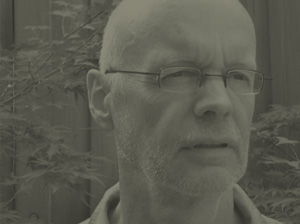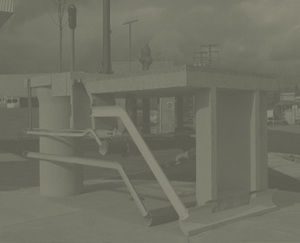Rachel Rosenfield Lafo
Sculpture Magazine, June 2012, pp. 78-79.
Greg Snider's eight "Models for the Public Sphere" are absurdist and visionary monuments to human, societal, and governmental follies, abominations, and questionable policies. Using the term "critical realism" to describe his approach, the Vancouver artist cleverly and humorously turns normality on its head in his meticulously crafted, speculative models. Although none of these proposals have yet been submitted for public art competitions, one hopes that at least some will eventually be realized at full scale. With their motorized parts and DIY know-how, these fictional conceptions provide fodder for further reflection on a variety of topical issues.
Take, for example, Project for New Development (Ghost Version). A toy concrete truck stands on its end, raised up and supported by a seemingly never-ending tower of concrete. Playful with a serious undertone, this model takes a satirical poke at the rampant development driving Vancouver's overheated real estate market, as well as the CO2 emissions that result from concrete production.
In Project for the Tar Sands (Recirculating Crude Oil Fountain for Fort McMurray), Snider offers another environmental critique or, at the very least, a cautionary comment aboutthe negative impact of large-scale oil extraction at the Athabasca Tar Sands in northeastern Alberta. In its circular, tiered arrangement and tenuous-looking construction, his fountain resembles another visionary structure, Vladimir Tatlin's utopian Monument to the Third International. While Tatlin's unbuilt monument was proposed as the headquarters of the Communist Party, Snider's fountain is more ambiguous. Does this lopsided tower of bubbling and re-circulating oil celebrate the economic potential of the tar sands or warn us about our dependence on a fuel source that damages the earth's climate?
In Project for a Holocaust Memorial, Snider uses the railroad car as a potent signifier of the Holocaust, referencing the method used by the Nazis to move millions of Jews into concentration camps. Two model freight cars bisect at their midpointsto form a Greek cross. Seen from above, the X-shape graphically represents the cancellation or negation of lives. The cars sit on tracks that lead nowhere, with no visible means of access or egress, offering no possibility of escape. Like the full-size freight cars on exhibit in many Holocaust museums, Snider-s renditions offer a tragic reminder of a hopeless situation and its inevitable outcome.
Public spaces need more projectsthat challenge the status quo with humor and intelligence, that engage and dazzle with their daring. Project for a Public Fountain does just that. Snider proposes a huge rock magically held aloft on a thick torrent of water that cascades into a basin below. Referencing Noguchi's stone sculptures and Zen rock gardens, Snider's fountain, if installed in a public place, would confound expectations while encouraging meditation and reflection. Public Fountain is one visionary project that surely needs to be built.





All Rights Reserved. contact: greg@gregsnider.ca
Models for the Public Sphere: Tar Sands, Aircraft, Holocaust...
Deluge Contemporary Art, Victoria, BC, January 27 - February 25, 2012
Deluge Contemporary Art, Victoria, BC, January 27 - February 25, 2012
gregsnider.ca Copyright © 2007 - Greg Snider.